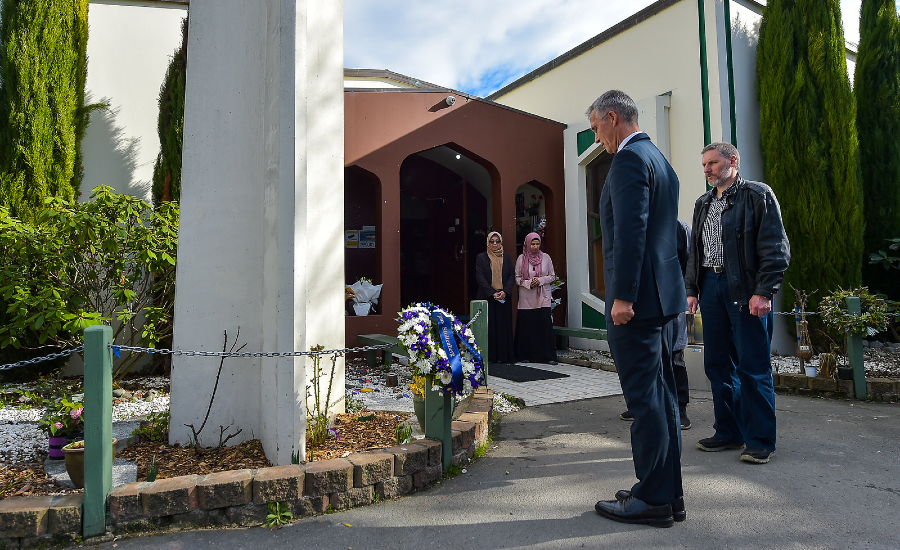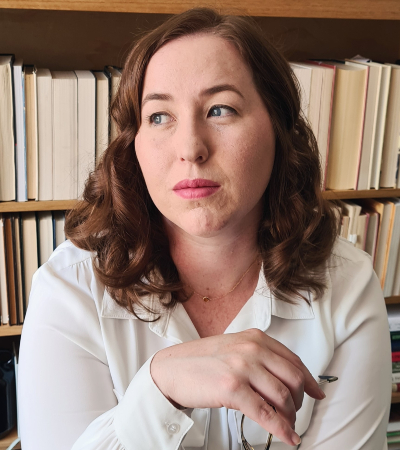Foreign Fighters and Fellow Travelers: Right-Wing Extremism in Australia and the United States
White nationalism has a long history in Austrailia that has been reinforced by transnational ties to extremist groups in the United States.

Published by The Lawfare Institute
in Cooperation With

Editor’s Note: America has rediscovered its right-wing extremism problem in recent years, recognizing the danger this movement poses to the lives of Americans and to democracy itself. The United States, unfortunately, is not alone. Kristy Campion, a lecturer at Charles Sturt University in Australia and author of “Chasing Shadows: The Untold and Deadly History of Terrorism in Australia,” describes some of the long history of right-wing extremism in her country and details its many connections to the United States.
Daniel Byman
***
The United States is not alone in its problem with right-wing extremism. When America’s attention to this issue looks abroad, it is usually to Europe. One of the most instructive places to look, however, is Australia. As established in my recently published book, Australia has long had a problem with right-wing extremist movements with many transnational connections.
The Australian extreme right seldom operate in a vacuum—they commonly seek connections with fellow travelers in other white-majority countries, including the United States. These connections, in turn, inform and reinforce their beliefs and operations. These operations include traveling to foreign countries to fight—a legacy that goes back 60 years.
Deep Connections
There are significant histories on the extreme right in the United States, but the same cannot be said for Australia. The 1901 White Australian policy and other systems encouraged white nationalism to thrive, which meant that rising European fascism found fertile lands in Australia early, starting in 1920. Nazi stormfronts were established as early as 1930, and over the following decades extreme right-wing organizations rose and fell.
Some of those organizations developed strong transnational connections with like-minded people in other white-majority nations. One such example is the Ustaša, a fascist organization that ruled Croatia on behalf of the Nazi Party during World War II. After the war, the Ustaša went underground and overseas, becoming one of the many organizations monitored by the CIA.
The Ustaša developed a strong foothold in Australia. Australian members kept the international network afloat financially and undertook violent missions. Arguably, its operatives became the first foreign terrorist fighters from Australia. In 1963, Australian Ustaša operatives traveled to Trieste, Italy, and then mounted an incursion into Yugoslavia. Armed with 30 pounds of explosives and 100 detonators, the group sought to incite an insurrection, to be followed by a fascist revolution. They were captured on arrival.
The Ustaša tried this strategy again in 1972, when Australians were part of a 19-person cadre that entered Yugoslavia near Bugojno. They attempted to rouse the citizenry to revolt, but local citizens immediately called the authorities. Yugoslav security forces engaged in a gun battle with the group, leaving 13 dead. As a result, the U.S. FBI told the Australian government that they regarded Australia as the “hotbed of Ustaša terrorism” in 1973.
Broad Networks
The Australian extreme right wing, however, regarded the white citizens of the United States as their allies and fellow travelers. Throughout the 1960s, various Australian groups followed the campaigns of George Lincoln Rockwell, an American neo-Nazi and politician. Australian Customs intercepted parcels of propaganda, including stickers emblazoned with “Hitler was Right,” from U.S. senders suspected of involvement with Rockwell. The two milieus also paid each other visits, or at least tried—Rockwell attempted to visit Australia but abandoned his plans after the media suggested his visa would be rejected.
Jack van Tongeren, the leader of a right-wing extremist group called the Australian Nationalist Movement, traveled to the United States in 1983. There, he met with a representative of the neo-Nazi American Workers Party. Van Tongeren described the United States as “Zionist dominated and sick” and saw “vice, degeneration and perversion” seemingly everywhere. He later obtained the “bible” of the American extreme right, the novel “The Turner Diaries,” and distributed thousands of copies in Australia.
When Van Tongeren returned home to Western Australia, his organization initiated its own Kristallnacht. From 1989 to 1990, they conducted a firebombing campaign against the businesses of Australians of Asian descent as part of a strategy to force them to leave Australia. Members openly stated that they had hoped to cause terror in the Asian community. They further justified the violence as self-defense, arguing they were imperiled by Asian immigration and Zionism, which they saw as evidence of white replacement.
Although extreme-right organizations in the United States and Australia could (and commonly did) operate independently, a few organizations managed to establish chapters in both nations. The Hammerskin Nation, established in Dallas in the late 1980s, had two separate and rival chapters in Australia: the Southern Cross Hammerskins and the Australian Hammerskin Nation. Another import was Aryan Nations, which had an active Australian chapter. These organizations kept the exchange of ideas alive. Blood & Honour, an organization based in the United Kingdom, also established a beachhead in both Australia and the United States.
Shared Beliefs
Groups like these, including Aryan Nations, peddled conspiracy theories that remain prevalent today, including ideas about “white genocide,” which is also sometimes described as “replacement theory.” This conspiracy theory argues that the white population is being threatened as a result of immigration and multiculturalist policies that are shifting national demographics. In Australia, this conspiracy theory received public attention after the March 2019 terrorist attack in Christchurch, New Zealand. The terrorist, an Australian citizen, attacked two mosques with firearms and was arrested en route to a third, leaving 51 people dead and 49 injured. The attacker was found to have both domestic and international connections and was inspired by demographic conspiracy theories.
Transnational networks, like those that link Australian white supremacists with others abroad, serve to buttress the belief systems of extremists by reinforcing shared ideological positions and introducing new and complementary ideas. Personal visits also contribute to this connectedness. This could partly explain why extreme-right violence around the world comes in waves.
These networks between transnational extreme-right communities persist. The Base, a neo-Nazi cell established in the United States that openly celebrates terrorism, sought to recruit Australians in 2021. The Order of Nine Angles, a Satanic neo-Nazi cult that originated in the United Kingdom and has been influential in the United States, also expanded its operations to Australia through a local affiliate organization, the Temple of THEM. Numerous encrypted social media channels exist between other Australian groups and U.S. accounts.
Beyond the U.S. connection, Australians have traveled to Ukraine to fight with right-wing nationalist organizations, donated to European organizations and consolidated their networks in New Zealand. Fighting in foreign lands is perhaps the strongest indication of this transnational connectivity.
A Common Enemy
This review illuminates a very simple fact: Transnational connections between the extreme right in Australia and the United States have a long history and continue to the current day. FBI and CIA officials recognized decades ago that the extreme-right threat in Australia could have an impact on U.S. national security.
As the Christchurch attack demonstrates, the transnational connections of the extreme right must be understood in order to effectively counter this threat.
As policymakers in Australia, the United States and elsewhere consider new policies and efforts to counter the extreme right, they must conceptualize it as a transnationally entrenched threat. Because of this, policies should involve greater multilateral collaboration, particularly with respect to transnational extremist networks, and facilitate the sharing of databases of the broad array of signs, symbols, tattoos, slogans and literature that help identify extremists.
More than 20 years after countries worldwide formed a coalition to combat transnational Salafi jihadism, it is worth reflecting on the benefits of joint initiatives in counterterrorism. The strong partnerships formed against one threat could assist with countering another: the transnational extreme right.




